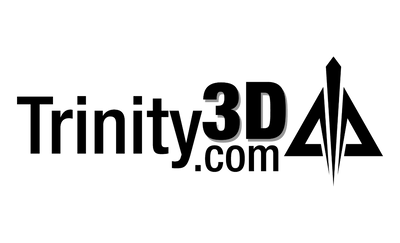Hagen Gilbert - VFX Pro
Trinity Animation’s Artist Spotlight focuses on the many talented artists in the Visual Effects (VFX) industry. Highlighting one project in the artist’s portfolio, our Artist Spotlight blog series shares the creative processes and inspiration behind a project's creation. Utilizing industry-leading 3D rendering software in V-Ray 5 and modeled in 3ds Max, Hagen Gilbert created a photo-realistic render of a vehicle collision. Read on to learn more about VFX professional Hagen Gilbert in our featured Artist Spotlight.Introduction
I started my VFX career as a production assistant at the LA branch of the Michigan-based Speedshape Inc. The artists there helped me work my way into being an artist myself. From there, I moved to a company called Mind Over Eye and then spent time as a CG Supervisor at Motor Trend Group. I currently work as an artist at DK Global doing accident and surgical reconstructions.
Project — Vehicle Collision
Software Used
3ds Max, V-Ray 5, PhoenixFD, Photoshop, Forest Pack, EvermotionScope
This image is of a vehicle collision scene in an urban environment. The piece was created using 3ds Max, V-Ray 5, and Phoenix FD for some smoke and fluid effects. The post will be done in Photoshop. I am highlighting the use of the built-in V-Ray 5 material library, as well as Chaos Scans on the cars, environment, and fluids. The environment is utilizing iToo software's Forest Pack and Evermotion trees and buildings and humans. The street texture is from Textures.com. The vehicles will exhibit modeled damage to their exterior. The goal of the image is to present a dynamic and realistic vehicle collision.Modeling
The vehicles have had a collision so damage modeling to their exterior is required. I started with a mesh select modifier to select what I wanted to adjust using a 4x4x4 free form deformer modifier in 3ds Max. After moving the geometry in the desired dents and crushed areas, I applied an edit poly modifier. In the edit poly modifier, I used a vertex paint deformation to add detail to the damaged areas. Again, applying a mesh select I used a noise modifier to add some small details to the mesh. On top of the modifier stack, I added an extra turbo smooth to clean up any jagged areas that may have appeared. The use of 3Ds Max modifiers helps reduce the hand modeling time and make quick adjustments with their modular nature. A V-Ray blend material showing some tarnished metal beneath the paint was also applied. I also did a basic MassFx simulation to break the tail light geometry onto the road from the collision.
Materials and Textures
I wanted to showcase the new V-Ray 5 material library and Chaos Scan’s ability to provide awesome out-of-the-box materials in this image. The vehicles are using a combination of the built-in V-Ray 5 library and Chaos Scans for the car paint and carbon fiber. some Evermotion materials were replaced with built-in V-Ray materials (streetlights, cement) but the Evermotion trees (being distributed with Forest Pack as custom objects) retained their native materials and textures. The camera is so close to the road a high-resolution 4k texture was needed and it was purchased from Textures.com along with the needed height and reflection maps. A V-Ray blend material was utilized to a small degree in the damaged areas to let some raw metal show through the car paint. And a color adjustment was made to the built-in olive oil fluid material and was applied to the Phoenix fluid simulation to represent leaking antifreeze.
Camera Setup
I looked through reference images of car crashes to find some interesting angles to try out. I was initially planning on having more of the sports car front end in the foreground of the image, with about half being cut off from the screen with the SUV in the midground and a strong depth of field (DOF) behind. But once I had that all in-camera, I decided I wanted to show off more of the vehicles and the V-Ray materials so I went and moved the camera to more of an overhead three-quarters angle. Unfortunately, it started to get too much of an orthographic look and was not very dynamic. So, I put the camera at more of a low angle and dropped the lens to 30mm to get that nice wide angle. This allowed me to show off the vehicles in the sunlight, have more of the Phoenix sims visible, while also saving some environmental work time by filling the screen with the vehicles.Lighting
The lighting for this scene is done using a 16k hdri I found at hdrihaven.com and a V-Ray sun. I then used a script called Find and Bind from scriptspot.com. What this does is apply the hdri to a dome light and environment, while also wiring a V-Ray sun to the sun position in the hdri. Then you can then simply rotate the dome light to adjust where the light is hitting your scene. I did not use exposure on my camera, so I needed to drop the V-Ray sun intensity multiplier down to .007 to keep things from blowing out. There is also a self-illuminated material in the SUV lights.Rendering
Rendering was done using the CPU renderer in V-Ray 5. The final render is a 3840x2160 image. I used the bucket image sampler with 1/24 min/max subdiv and a noise threshold of .007 and bucket width of 16 pixels. I used brute force for the primary GI (bounces set to 3) and light cache for the secondary with a 3000 subdiv setting. I went with the CPU render only because of my better familiarity with it and how materials react with it. If I’m doing an animation, I would generally use the V-Ray denoiser render element, utilizing the NVIDIA AI denoiser. Since this piece was for a still render, I decided not to and just up my settings and resolution to clean up the image as needed. I also added a zdepth render element set to 2000 feet and a V-Ray extra tex render element with a dirt map for ambient occlusion.Post-Production
 I took the 4k render in Photoshop and using the zdepth pass I added more depth of field. I had some in-camera depth of field, but I wanted to have more control to increase it using the render element in Photoshop. Once I achieved a DOF I liked, I then brought in the ambient occlusion render element, added it in, and masked it away from any areas I did not want it. On still images, I like to add a chromatic aberration to the image. This can easily be overdone and is not really the desired effect of a photographer, but I think it adds a level of realism to an image. Finally, I added a small vignette to the overall image.
I took the 4k render in Photoshop and using the zdepth pass I added more depth of field. I had some in-camera depth of field, but I wanted to have more control to increase it using the render element in Photoshop. Once I achieved a DOF I liked, I then brought in the ambient occlusion render element, added it in, and masked it away from any areas I did not want it. On still images, I like to add a chromatic aberration to the image. This can easily be overdone and is not really the desired effect of a photographer, but I think it adds a level of realism to an image. Finally, I added a small vignette to the overall image.
Conclusion
I feel this image meets my original concept idea. I think the V-Ray out-of-the-box materials look great, and the ease of V-Ray 5 to render a clean image at a fast speed made it an ideal tool for this project. There are always more details that could have been added to the environment. Having some background vehicles would have been nice, but the image started to feel busy and cluttered as I tried adding more cars to the edges of the scene. I would have liked to refine fluid simulation more, have it running out of different areas below the SUV and with different colored fluids. One thing I might have done differently is fixing the displacement on the road done in the actual geo, instead of the material, and run the sims and mass fx over that. Having the displacement in the material I ended up having to adjust the fluid and broken glass geo with trial-and-error renders. But overall, I am satisfied with the image and had a great experience with V-Ray 5 and the built-in material library and Chaos Scans.
You can access Hagen’s online portfolio at https:www.artstation.com/hagenshape

